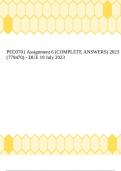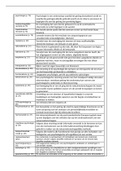Samenvatting
Summary of all articles, lectures and workshops from Loss & Psychotrauma
- Vak
- Instelling
This document summarizes all articles, lectures and workshops from the Loss & Psychotrauma course for the Clinical Psychology masters. I got an 8.9 for the exam.
[Meer zien]












